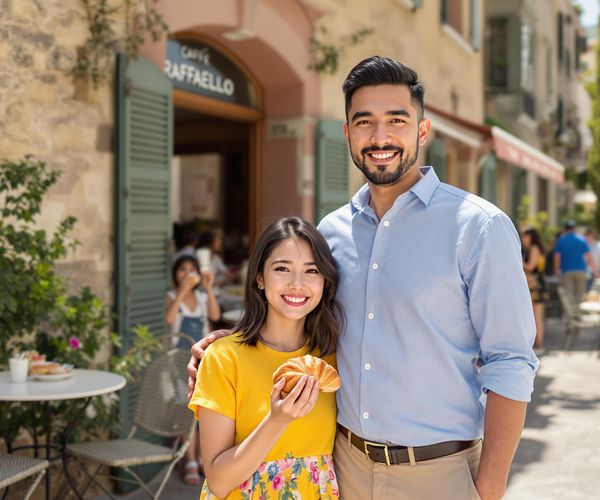
Urbino: Renaissance Jewel in the Italian Hills
Discover Urbino, a captivating Renaissance city in Italy's Marche region, where history, art, and stunning landscapes come together in perfect harmony.
Nestled in the rolling hills of the Marche region, Urbino is a city steeped in history and brimming with Renaissance charm. As you approach the city, you will be greeted by its impressive skyline, dominated by the majestic Palazzo Ducale. This grand palace, once the residence of Duke Federico da Montefeltro, now houses the Galleria Nazionale delle Marche, home to an impressive collection of Renaissance art, including works by Raphael, who was born in Urbino. Wandering through the cobblestone streets of Urbino, you will feel as though you have stepped back in time. The city's well-preserved architecture and historic buildings create an enchanting atmosphere. The Duomo, Urbino's cathedral, is a must-visit for its stunning neoclassical design and beautiful interior. Don't miss the chance to explore the Oratorio di San Giovanni, adorned with breathtaking frescoes by the Salimbeni brothers. Urbino is also a lively university town, home to the University of Urbino, which adds a youthful energy to the city's historic setting. Be sure to visit the birthplace of Raphael, now a museum dedicated to the artist's life and works. For a panoramic view of the city and the surrounding countryside, head to the Albornoz Fortress. This vantage point offers a stunning perspective of Urbino's unique blend of natural beauty and architectural splendor.
Local tips in Urbino
- Wear comfortable shoes as the city is hilly and its streets are cobblestone.
- Visit the Galleria Nazionale delle Marche early to avoid crowds and have a more intimate experience with the art.
- Try the local cuisine, especially crescia, a traditional flatbread, and casciotta cheese.
- Check the university's calendar for cultural events and festivals that might coincide with your visit.
- Plan a day trip to the nearby Furlo Gorge for a taste of the region's natural beauty.
Urbino: Renaissance Jewel in the Italian Hills
Nestled in the rolling hills of the Marche region, Urbino is a city steeped in history and brimming with Renaissance charm. As you approach the city, you will be greeted by its impressive skyline, dominated by the majestic Palazzo Ducale. This grand palace, once the residence of Duke Federico da Montefeltro, now houses the Galleria Nazionale delle Marche, home to an impressive collection of Renaissance art, including works by Raphael, who was born in Urbino. Wandering through the cobblestone streets of Urbino, you will feel as though you have stepped back in time. The city's well-preserved architecture and historic buildings create an enchanting atmosphere. The Duomo, Urbino's cathedral, is a must-visit for its stunning neoclassical design and beautiful interior. Don't miss the chance to explore the Oratorio di San Giovanni, adorned with breathtaking frescoes by the Salimbeni brothers. Urbino is also a lively university town, home to the University of Urbino, which adds a youthful energy to the city's historic setting. Be sure to visit the birthplace of Raphael, now a museum dedicated to the artist's life and works. For a panoramic view of the city and the surrounding countryside, head to the Albornoz Fortress. This vantage point offers a stunning perspective of Urbino's unique blend of natural beauty and architectural splendor.
When is the best time to go to Urbino?
Iconic landmarks you can’t miss
Palazzo Ducale di Urbino
Discover the Renaissance elegance at Palazzo Ducale di Urbino, a historical landmark with stunning art collections and breathtaking architecture.
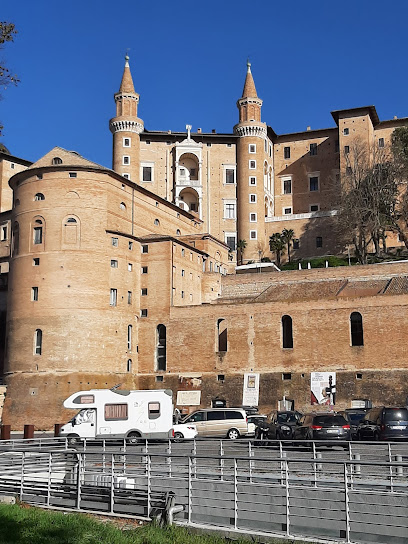
National Gallery of the Marche - Ducal Palace of Urbino
Explore the National Gallery of the Marche in Urbino, a captivating blend of Renaissance art and stunning architecture in a historic palace.
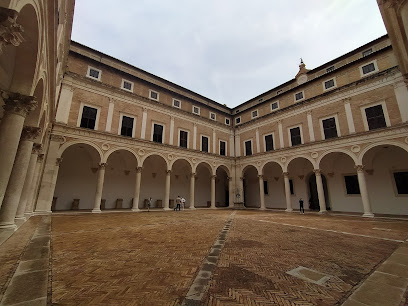
Casa Natale di Raffaello
Explore the birthplace of Raphael in Urbino, where art and history converge in a captivating museum experience.
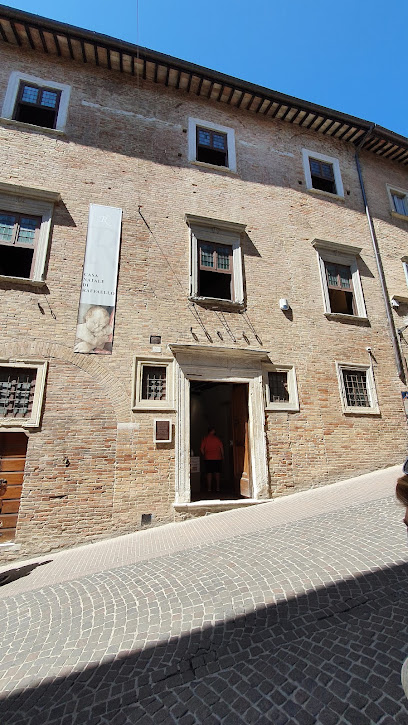
Parco della Resistenza
Discover the tranquility of Parco della Resistenza, a picturesque park in Urbino, rich in history and natural beauty, perfect for relaxation and reflection.
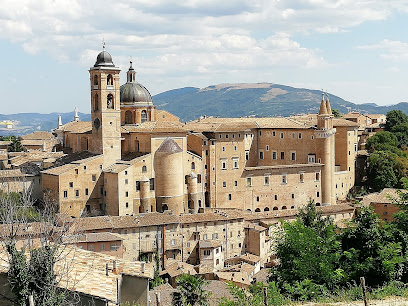
Fortezza Albornoz
Discover the enchanting Fortezza Albornoz in Urbino, a historical fortress surrounded by stunning landscapes and rich Italian heritage.
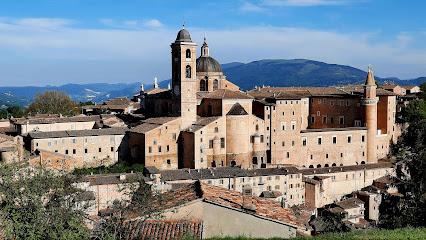
Historic Centre (Unesco)
Explore the Historic Centre of Urbino, a UNESCO World Heritage site filled with Renaissance art, stunning architecture, and a vibrant cultural scene.
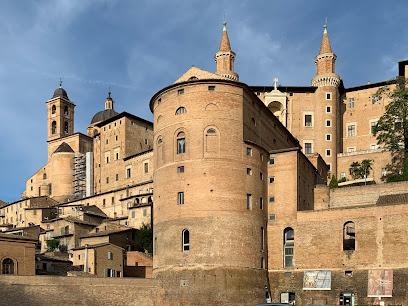
Oratorio di San Giovanni Battista
Explore the Oratorio di San Giovanni Battista, a breathtaking Catholic church in Urbino, rich in artistry and spiritual tranquility.
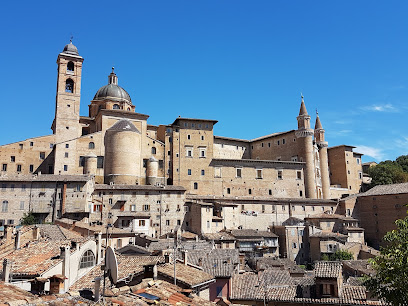
Cattedrale di Santa Maria Assunta
Explore the Cattedrale di Santa Maria Assunta, a Renaissance masterpiece in Urbino, Italy, filled with stunning art and rich cultural history.
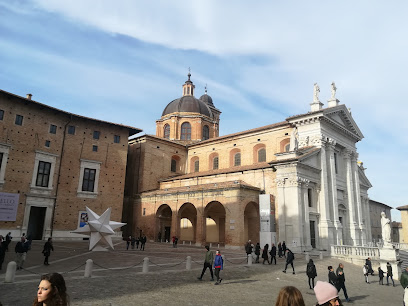
Chiesa di San Bernardino
Discover the serene beauty and architectural splendor of Chiesa di San Bernardino in Urbino, a must-visit Catholic church rich in history.
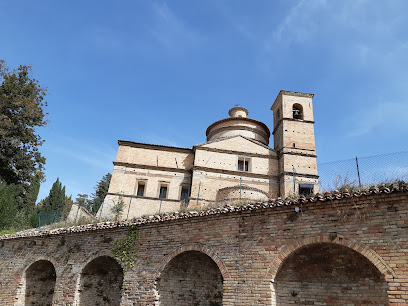
Helical Ramp Bastion
Discover the architectural splendor of the Helical Ramp Bastion in Urbino, Italy, a historical landmark showcasing Renaissance ingenuity and breathtaking views.
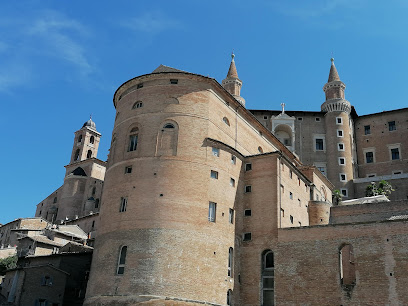
Botanical Garden of the University
Discover the tranquility of the Botanical Garden of the University in Urbino, a serene retreat showcasing diverse plant species in a picturesque setting.
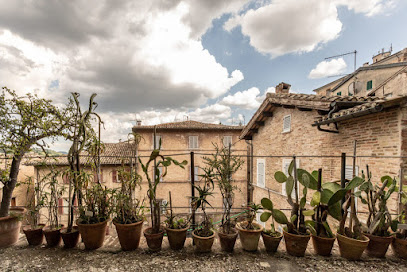
Monument to Raphael
Discover the Monument to Raphael in Urbino, a stunning sculpture celebrating the life and legacy of the Renaissance master in a UNESCO World Heritage Site.
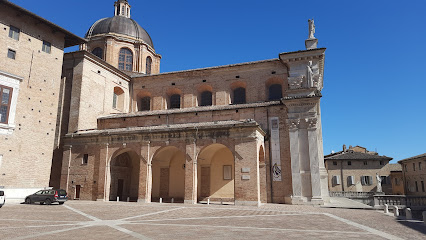
Punto Panoramico di Urbino
Discover the stunning panoramic views at Punto Panoramico di Urbino, a breathtaking attraction showcasing the beauty of Italy's Renaissance heritage.
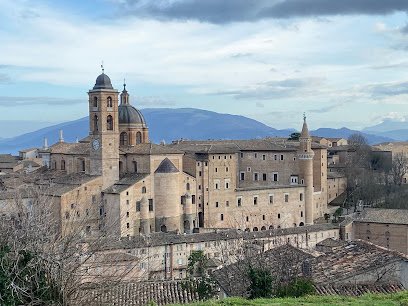
Palazzo Albani
Explore the architectural beauty and historical significance of Palazzo Albani, a Renaissance gem in the heart of Urbino, Italy.
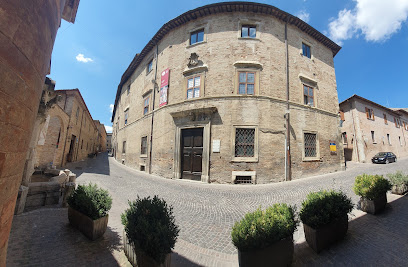
Museo diocesano Albani
Explore the rich artistic heritage of Urbino at Museo Diocesano Albani, a must-see art museum showcasing centuries of religious art and artifacts.
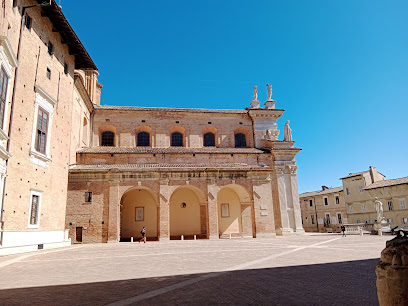
Unmissable attractions to see
Castello di Gradara
Explore the enchanting Castello di Gradara, a medieval fortress steeped in romance and history, offering breathtaking views and fascinating legends.
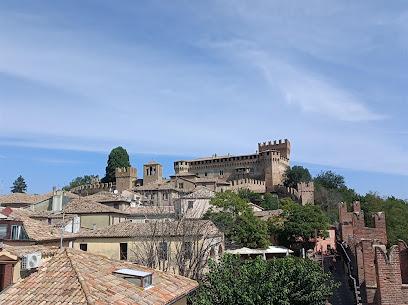
Parco Naturale Monte San Bartolo
Explore the stunning landscapes and hiking trails of Parco Naturale Monte San Bartolo, a serene natural park along Italy's Adriatic coast.
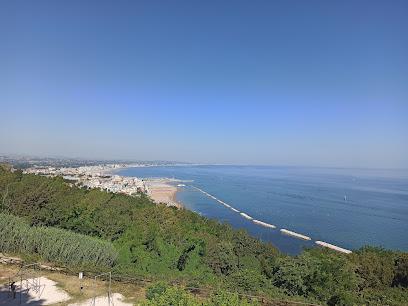
Palazzo Ducale di Urbino
Discover the artistic magnificence and historical significance of Palazzo Ducale di Urbino, a Renaissance masterpiece and cultural icon in Italy.
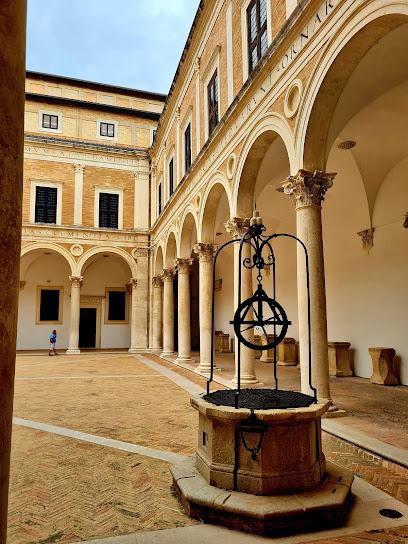
Furlo Pass
Explore Furlo Pass, a stunning nature preserve in Italy offering breathtaking views, diverse wildlife, and rich historical significance amidst dramatic landscapes.
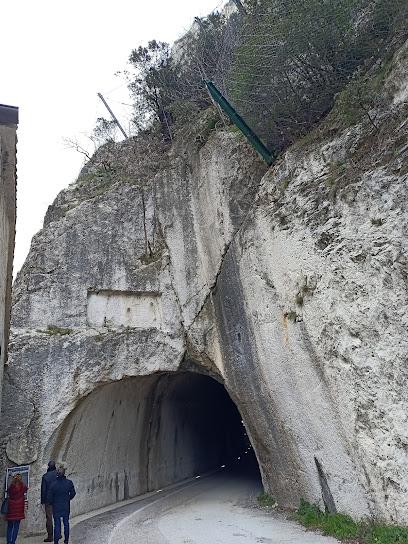
Basilica of Sant'Ubaldo, Gubbio
Discover the Basilica of Sant'Ubaldo in Gubbio: A stunning blend of spirituality, history, and breathtaking views.
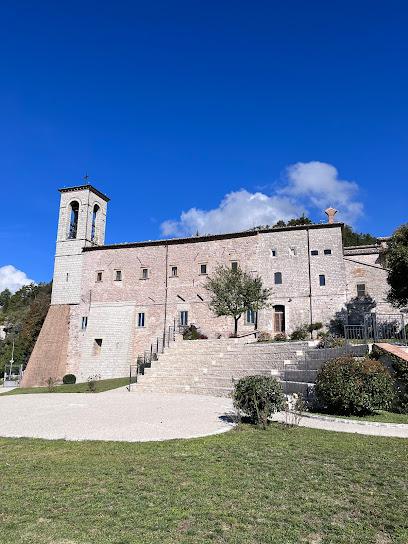
National Gallery of the Marche - Ducal Palace of Urbino
Explore the National Gallery of the Marche in Urbino, a Renaissance treasure showcasing masterpieces and rich cultural heritage.
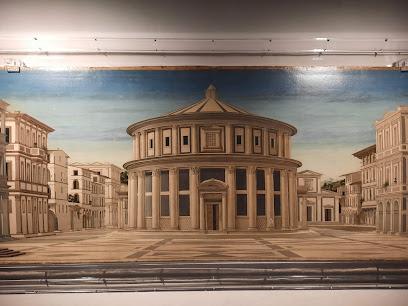
Palazzo dei Consoli
Explore the captivating history and stunning architecture of Palazzo dei Consoli in Gubbio, a must-visit museum in the heart of Umbria.
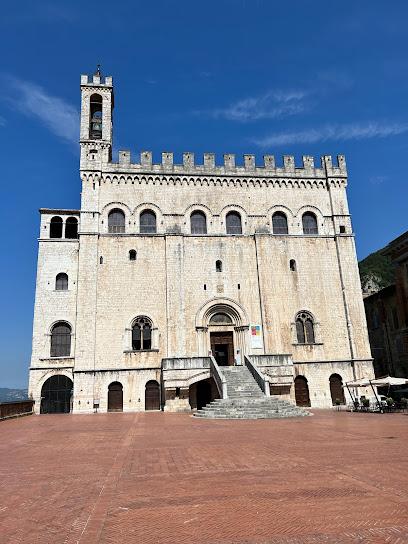
Al Foro Annonario
Discover the charm of Senigallia at Al Foro Annonario, an inviting hotel and tourist attraction that blends history with modern comfort.

Grotte di Frasassi - Parcheggio e Biglietteria
Discover the enchanting Grotte di Frasassi, an underground wonder in Italy's Marche region, showcasing stunning limestone formations and breathtaking caverns.
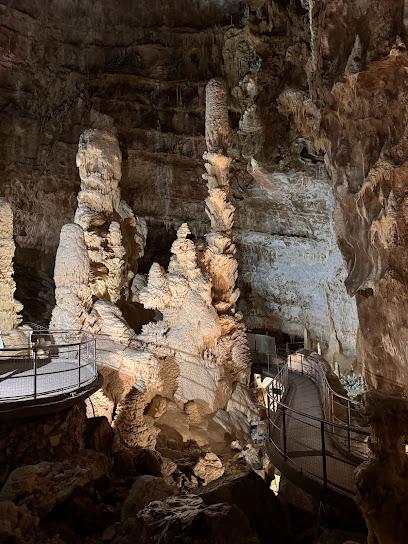
Casa Natale di Raffaello
Discover the birthplace of Raffaello Sanzio in Urbino, where art and history come alive in a captivating museum experience.
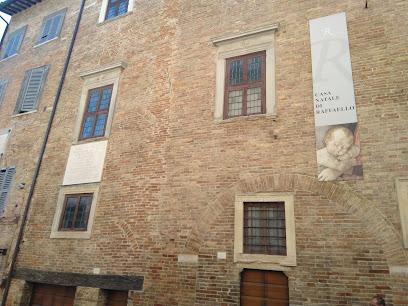
Parco della Resistenza
Explore the lush landscapes and historic monuments of Parco della Resistenza in Urbino, a serene park offering cultural and natural delights.
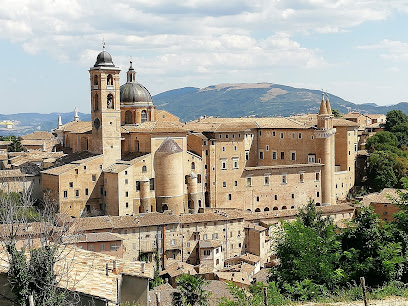
Fortezza Albornoz
Experience the rich history and breathtaking views at Fortezza Albornoz, a stunning fortress and park in Urbino, Italy, perfect for every traveler.
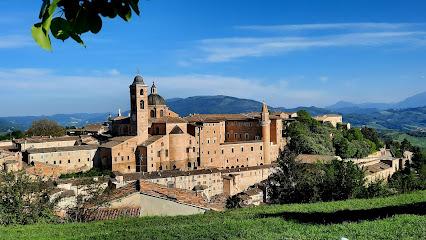
Loretello Castle
Experience the medieval charm and breathtaking views of Loretello Castle, a historical gem in the Province of Ancona, Italy.

Historic Centre (Unesco)
Explore the Historic Centre of Urbino, a UNESCO World Heritage Site, rich in Renaissance art, architecture, and Italian culture.
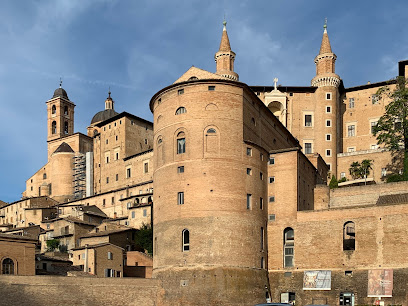
Castello Medievale di Piticchio
Experience the charm of Castello Medievale di Piticchio, a stunning medieval castle in the heart of Italy's Marche region, rich in history and picturesque views.
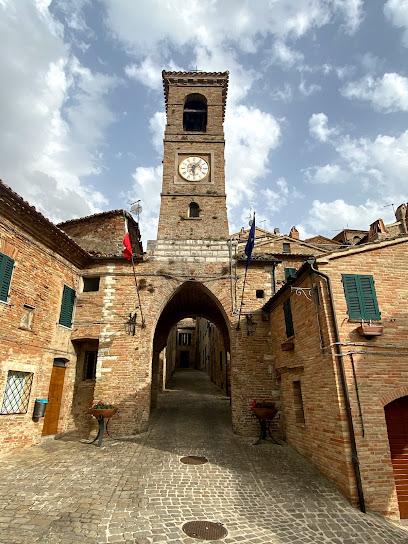
Essential places to dine
Amici Miei Ristorante Pizzeria
Experience authentic Italian cuisine at Amici Miei Ristorante Pizzeria in Urbino – where every dish tells a story.
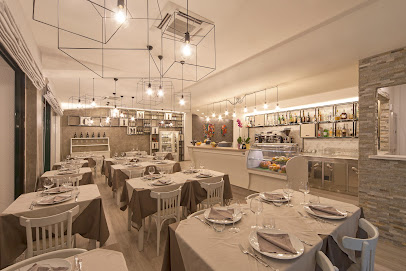
Taverna degli Artisti
Experience authentic Italian flavors at Taverna degli Artisti in Urbino – where every meal is a celebration of culinary artistry.
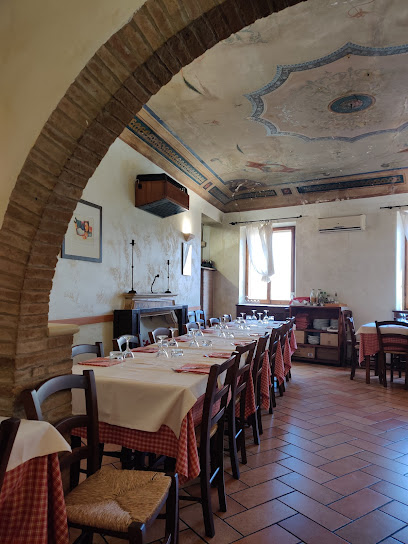
Ristorante Pizzeria Ragno d'oro Urbino
Experience authentic Italian cuisine at Ristorante Pizzeria Ragno d'oro in Urbino – where delicious pizzas meet a warm atmosphere.
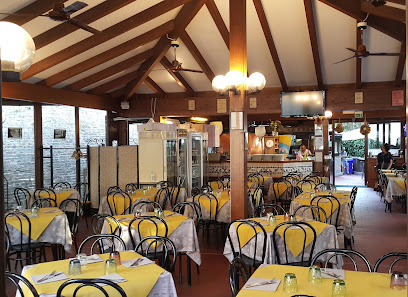
La Balestra antica hostaria
Discover authentic Italian cuisine at La Balestra Antica Hostaria in Urbino - where tradition meets flavor.
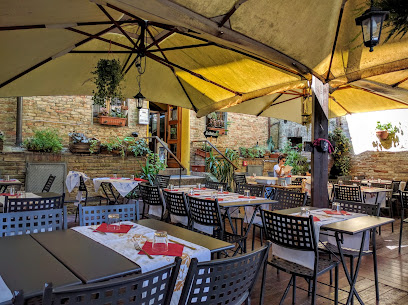
La Terrazza del Duca Urbino
Experience authentic Italian cuisine at La Terrazza del Duca Urbino - where delicious pizzas meet fresh seafood amidst stunning views.
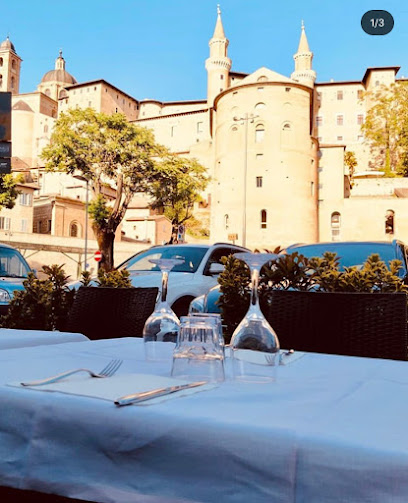
Osteria Km 0
Experience authentic Italian cuisine at Osteria Km 0 in Urbino – where local ingredients meet traditional recipes.
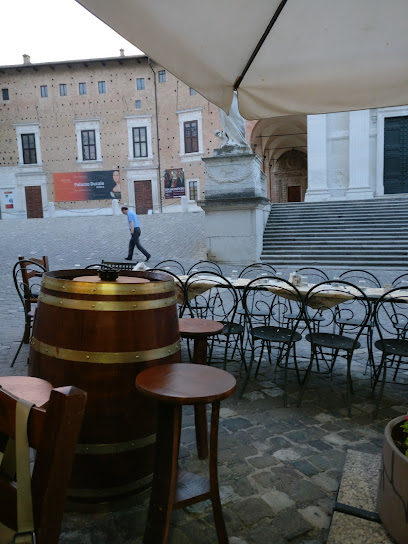
Canyon Fast Food
Discover Canyon Fast Food in Urbino: where delicious burgers meet Italian hospitality in an inviting atmosphere perfect for tourists.
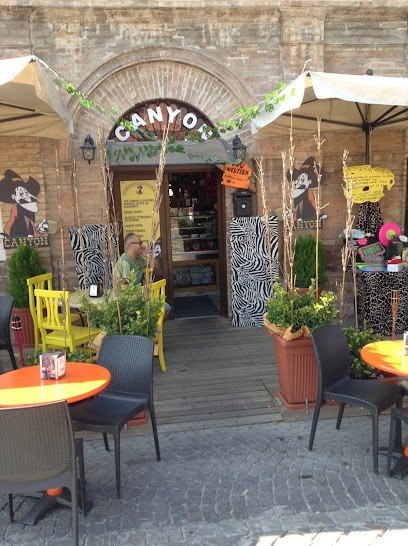
La Trattoria del Leone' di Lucarini Mauro
Experience the heart of Italian cuisine at La Trattoria del Leone - a culinary haven in Urbino offering authentic dishes made with love.
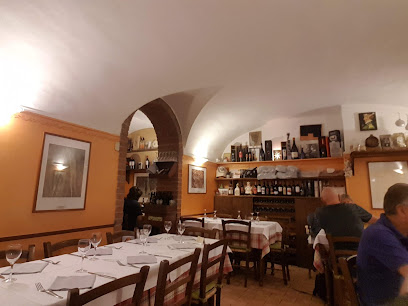
MYSTIC PIZZA di Pasini Maurizio
Discover the taste of Italy at Mystic Pizza di Pasini Maurizio in Urbino - where delicious pizza meets cozy atmosphere.
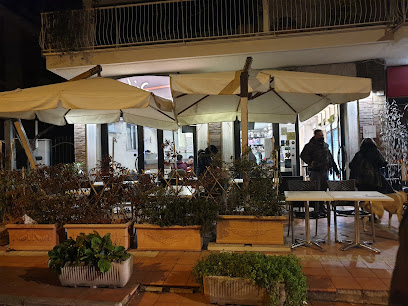
Il Cortegiano Ristorante
Experience authentic Italian cuisine at Il Cortegiano Ristorante in Urbino - where tradition meets flavor in a charming setting.
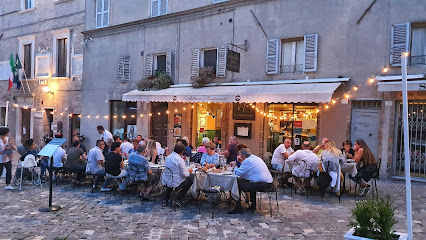
Ristorante Antica Osteria Da La Stella
Experience authentic Italian cuisine in Urbino at Ristorante Antica Osteria Da La Stella, where tradition meets culinary excellence.
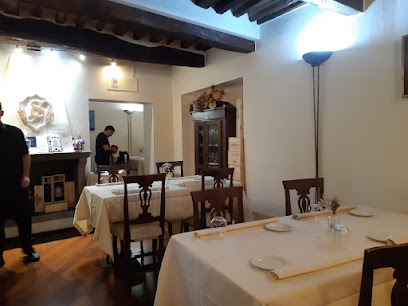
Osteria Gula - Urbino (pu)
Experience authentic Italian cuisine at Osteria Gula in Urbino - where tradition meets flavor in every dish.

Pizzeria il Ghiottone Urbino
Experience authentic Italian flavors at Pizzeria il Ghiottone Urbino – where every pizza tells a story.

Al Cantuccio Ristorante Pizzeria
Discover the authentic flavors of Italy at Al Cantuccio Ristorante Pizzeria in Urbino – where every meal tells a story.
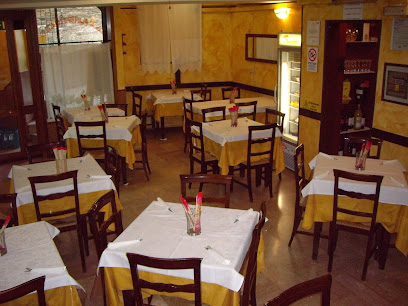
Ristorante Nenè
Discover Ristorante Nenè in Urbino for authentic Italian cuisine amid stunning Renaissance architecture.
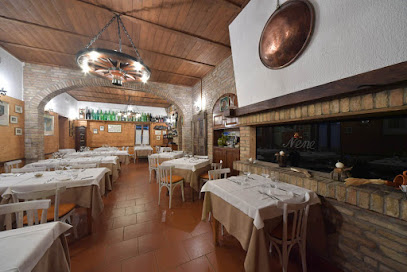
Markets, malls and hidden boutiques
Porta Santa Lucia
Discover Porta Santa Lucia in Urbino: A vibrant shopping mall blending local culture with diverse retail options for an unforgettable experience.
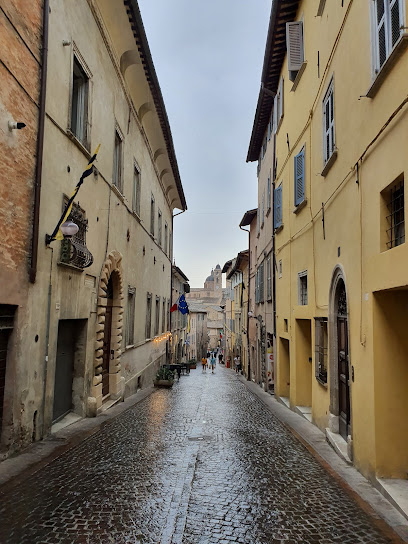
Piazza Italia
Discover fashionable clothing for the whole family at Piazza Italia in Urbino, where style meets local charm in a vibrant shopping experience.
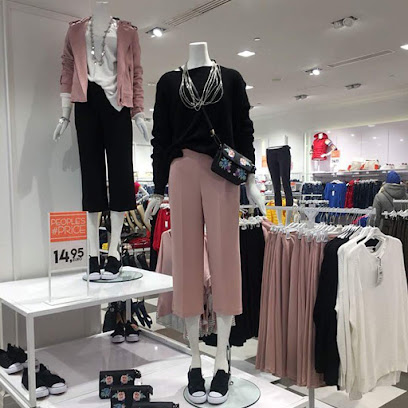
COINCASA
Explore COINCASA in Urbino for exquisite gifts, home decor, and unique furniture options that embody Italian craftsmanship and style.
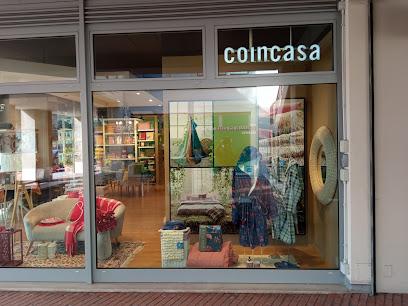
Emozioni in legno - rivenditore autorizzato artigianato italiano
Discover unique handcrafted wooden treasures at Emozioni in Legno, a premier craft store in Urbino showcasing Italian artistry.
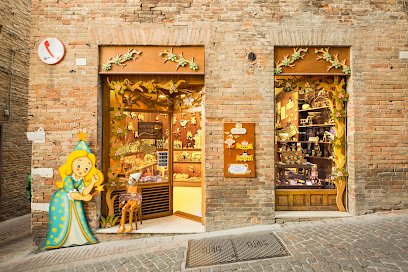
BOXstores
Unleash your sporty side at BOXstores in Urbino - your one-stop-shop for stylish sportswear, shoes, and athletic accessories.

GOLDENPOINT
Explore Italian fashion at GOLDENPOINT in Urbino, where style meets quality in a charming setting.
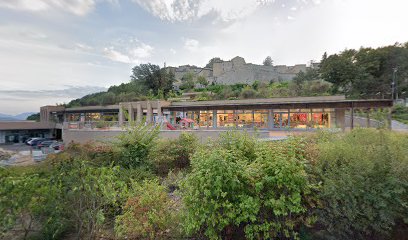
Das Andere Di Duranti Anna Maria
Discover unique handicrafts and local artistry at Das Andere Di Duranti Anna Maria, a treasure trove in the heart of Urbino.
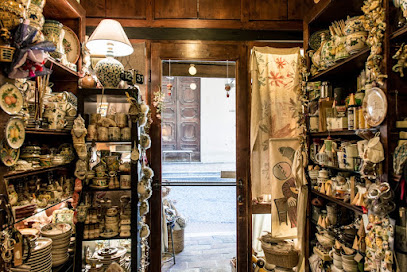
Maroccini - Articoli da Regalo & Liste Nozze
Explore Maroccini in Urbino for exquisite gifts and unique wedding lists, showcasing the rich Italian craftsmanship and cultural heritage.
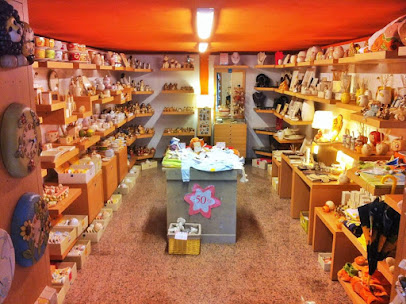
TAKKO FASHION Urbino
Explore a world of fashion at TAKKO FASHION Urbino, where trendy clothing for men, women, and children awaits at unbeatable prices.
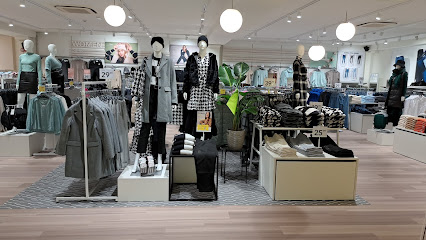
NaturaSì
Explore the best of organic living at NaturaSì, where quality products meet sustainability in the heart of Urbino.
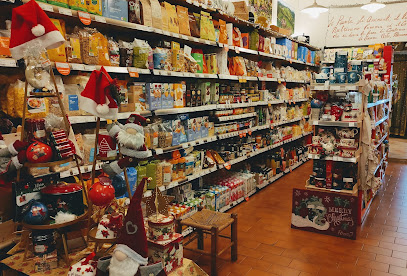
Liliana Martinez - Artigianato Artistico
Discover unique, handcrafted treasures at Liliana Martinez - Artigianato Artistico in Urbino, where local artisans bring creativity to life.
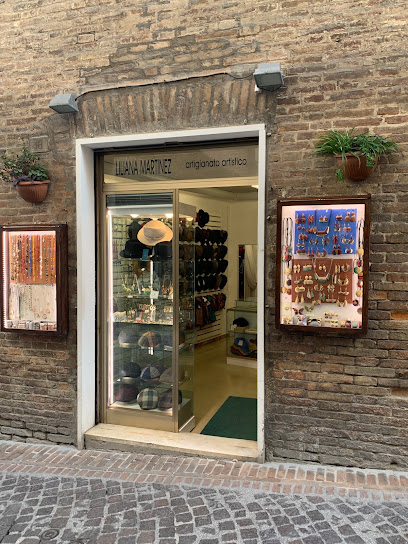
Castelli In Aria
Explore Castelli In Aria in Urbino for authentic Italian craftsmanship and unique souvenirs that embody the spirit of the region.

Emporio Gamba
Explore Emporio Gamba in Urbino for stylish clothing that beautifully blends contemporary and classic Italian fashion, perfect for every wardrobe.
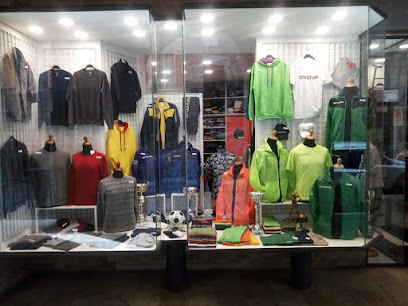
Ceramiche Artistiche Urbino
Explore the rich heritage of ceramics at Ceramiche Artistiche Urbino, where every piece tells a story of Italian artistry.
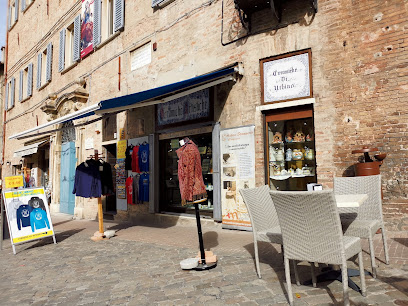
Star Shop Urbino
Explore the colorful universe of comics at Star Shop Urbino, where every page turned opens up a new adventure in a charming setting.
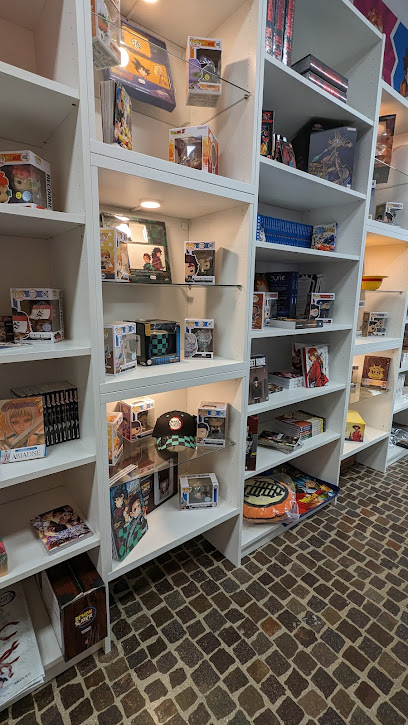
Essential bars & hidden hideouts
Lamonaca • since 1967
Discover the authentic Italian café experience at Lamonaca, a beloved bar tabac in the heart of Urbino since 1967, offering quality beverages and local charm.
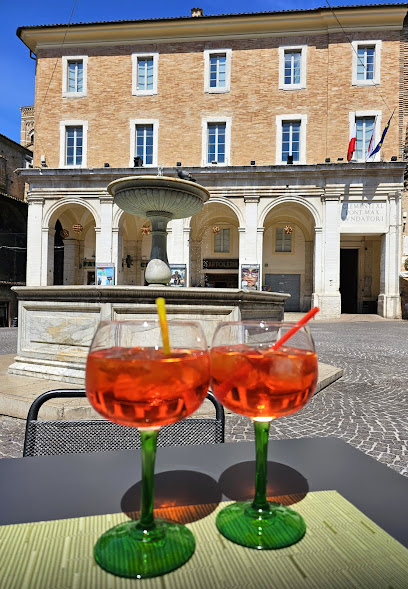
MaiSenza Lounge Bar
Discover the vibrant atmosphere of MaiSenza Lounge Bar in Urbino, where delightful drinks and live music create unforgettable memories.
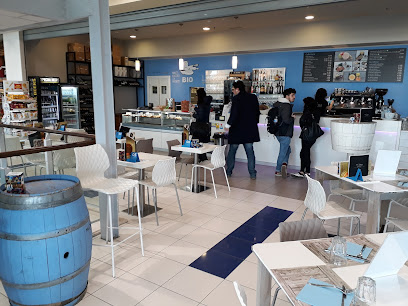
The Bosom Pub
Experience the charm of Urbino at The Bosom Pub, where delightful drinks and a cozy atmosphere await travelers seeking relaxation and good company.
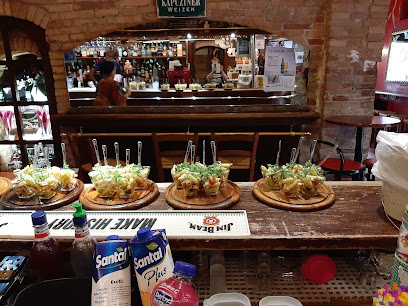
Camera A Sud
Experience the authentic flavors of Urbino at Camera A Sud, where every sip and bite reflects Italian culinary tradition.

Underground PUB
Discover the lively spirit of Urbino at Underground Pub, where local culture meets delicious drinks and great company.
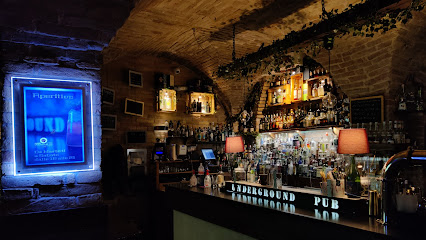
Fuoritema
Discover the vibrant atmosphere of Fuoritema in Urbino, where delightful drinks and local charm come together for an unforgettable experience.
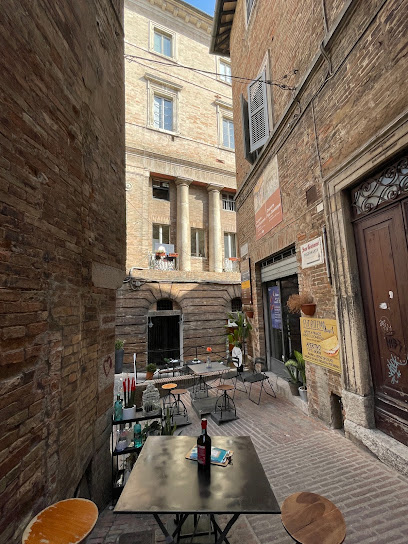
Art Cafè Urbino
Discover the vibrant nightlife of Urbino at Art Cafè, where cocktails meet culture in an unforgettable setting.
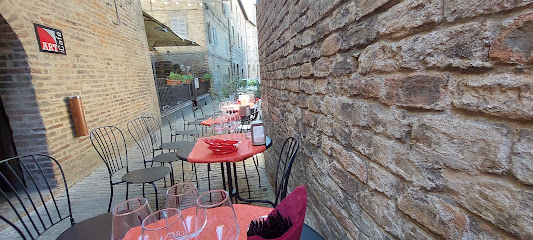
Bar Canasta
Experience the charm of Urbino at Bar Canasta, a cozy bar offering a delightful selection of beverages in a friendly atmosphere.
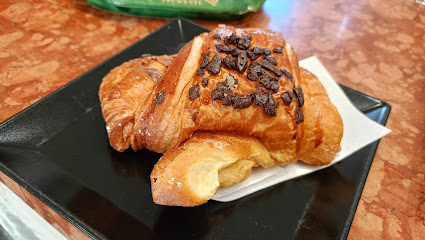
Bar Il Caffe' Degli Amici
Experience the heart of Urbino at Bar Il Caffe' Degli Amici, where exquisite coffee meets a charming atmosphere.

Street Bar
Discover the charm of Urbino at Street Bar, a cozy retreat for tourists offering a delightful selection of beverages and a vibrant atmosphere.
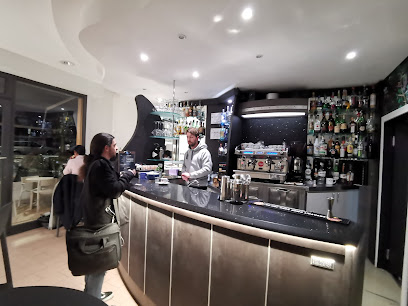
L'HOST: wine beer & something else
Discover L'HOST in Urbino: A cozy bar offering an exquisite selection of local wines and craft beers in a vibrant atmosphere.
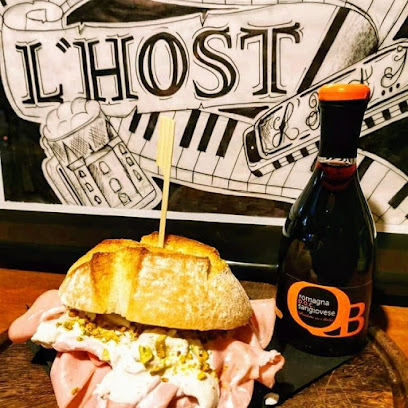
RIO’S
Discover the heart of Urbino at Rio's Bar, where lively ambiance meets Italian hospitality in a historic setting.
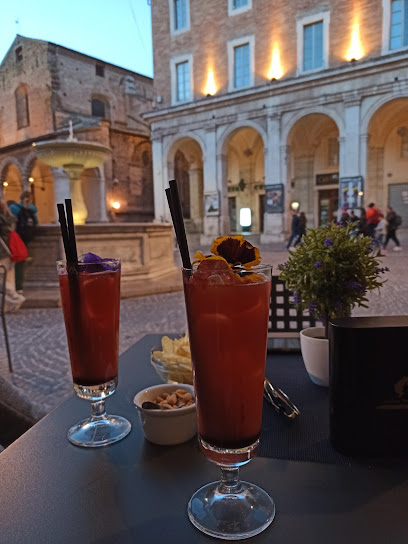
Caffè del Teatro
Experience the heart of Urbino at Caffè del Teatro, where coffee, culture, and live music come together in a charming setting.
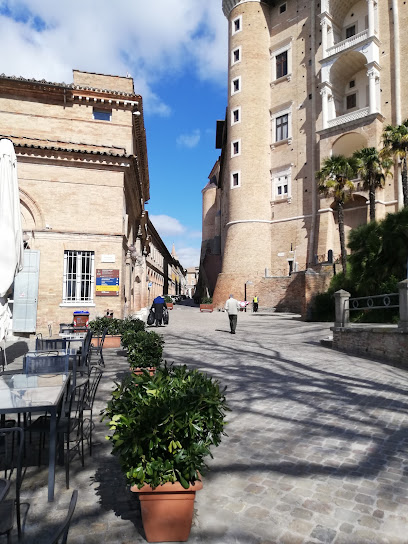
Piccolo BAR da IDO e ADO
Experience the authentic Italian bar culture at Piccolo BAR da IDO e ADO in Urbino, where delightful beverages and a warm atmosphere await.
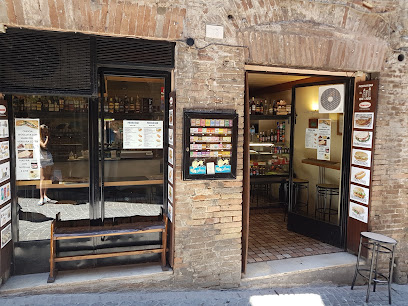
Bar tabacchi Giardino
Discover the local flavors and friendly atmosphere at Bar Tabacchi Giardino, the perfect spot to relax in Urbino's vibrant heart.
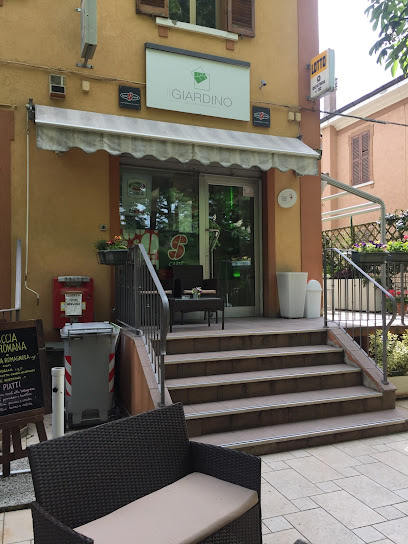
Travel experiences inspired by this city
Explore more travel diariesLocal Phrases
-
- HelloCiao
[chow] - GoodbyeArrivederci
[ah-ree-veh-dehr-chee] - YesSì
[see] - NoNo
[noh] - Please/You're welcomePer favore/Prego
[pair fah-voh-ray/preh-goh] - Thank youGrazie
[grah-tsyeh] - Excuse me/SorryScusi/Mi dispiace
[skoo-zee/mee dees-pyah-cheh] - How are you?Come stai?
[koh-meh sty] - Fine. And you?Bene. E tu?
[beh-neh. eh too] - Do you speak English?Parli inglese?
[pahr-lee een-gleh-zeh] - I don't understandNon capisco
[nohn kah-pee-skoh]
- HelloCiao
-
- I'd like to see the menu, pleaseVorrei vedere il menù, per favore
[vohr-ray veh-deh-reh eel meh-noo, pair fah-voh-ray] - I don't eat meatNon mangio carne
[nohn mahn-joh kahr-neh] - Cheers!Salute!
[sah-loo-teh] - I would like to pay, pleaseVorrei pagare, per favore
[vohr-ray pah-gah-reh, pair fah-voh-ray]
- I'd like to see the menu, pleaseVorrei vedere il menù, per favore
-
- Help!Aiuto!
[ah-yoo-toh] - Go away!Vai via!
[vah-ee vee-ah] - Call the Police!Chiama la polizia!
[kee-ah-mah lah poh-lee-tsyah] - Call a doctor!Chiama un dottore!
[kee-ah-mah oon doh-toh-reh] - I'm lostMi sono perso
[mee soh-noh pehr-soh] - I'm illMi sento male
[mee sehn-toh mah-leh]
- Help!Aiuto!
-
- I'd like to buy...Vorrei comprare...
[vohr-ray kohm-prah-reh] - I'm just lookingSto solo guardando
[stoh soh-loh gwar-dahn-doh] - How much is it?Quanto costa?
[kwahn-toh koh-stah] - That's too expensiveÈ troppo caro
[eh troh-poh kah-roh] - Can you lower the price?Può abbassare il prezzo?
[pwoh ahb-bahs-sah-reh eel preh-tsoh]
- I'd like to buy...Vorrei comprare...
-
- What time is it?Che ora è?
[keh oh-rah eh] - It's one o'clockÈ l'una
[eh loo-nah] - Half past (10)Sono le dieci e mezza
[soh-noh leh dyeh-chee eh meh-tzah] - MorningMattina
[maht-tee-nah] - AfternoonPomeriggio
[poh-meh-ree-joh] - EveningSera
[seh-rah] - YesterdayIeri
[yeh-ree] - TodayOggi
[oh-jee] - TomorrowDomani
[doh-mah-nee] - 1Uno
[oo-noh] - 2Due
[doo-eh] - 3Tre
[treh] - 4Quattro
[kwah-troh] - 5Cinque
[cheen-kweh] - 6Sei
[say] - 7Sette
[seht-teh] - 8Otto
[oh-toh] - 9Nove
[noh-veh] - 10Dieci
[dyeh-chee]
- What time is it?Che ora è?
-
- Where's a/the...?Dov'è un/il...?
[doh-veh oon/eel] - What's the address?Qual è l'indirizzo?
[kwahl eh leen-dee-reet-zoh] - Can you show me (on the map)?Puoi mostrarmi (sulla mappa)?
[pwah-ee moh-streh-ar-mee (soo-lah mahp-pah)] - When's the next (bus)?Quando passa il prossimo (autobus)?
[kwahn-doh pahs-sah eel prohss-see-moh (ow-toh-boo-s)] - A ticket (to ....)Un biglietto (per ....)
[oon bee-lyeh-toh (pair)]
- Where's a/the...?Dov'è un/il...?
History of Urbino
-
Urbino, located in the Marche region of Italy, traces its origins back to ancient times. It was initially a Roman municipium known as Urvinum Mataurense. The city’s strategic location atop a high sloping hillside made it a significant military stronghold during the Roman era.
-
During the early Middle Ages, Urbino was under the control of various feudal lords and experienced a period of turmoil and strife. It wasn't until the 13th century that the city began to stabilize under the Montefeltro family, who played a pivotal role in Urbino’s development.
-
The Renaissance period marked Urbino's golden age, largely due to the influence of Duke Federico da Montefeltro, who ruled from 1444 to 1482. A patron of the arts and a shrewd military leader, Federico transformed Urbino into a cultural and intellectual hub. He commissioned the construction of the Palazzo Ducale, a masterpiece of Renaissance architecture, and attracted artists, scholars, and philosophers to his court.
-
The Palazzo Ducale, commissioned by Federico da Montefeltro, stands as a testament to Urbino’s Renaissance grandeur. Designed by architect Luciano Laurana and later completed by Francesco di Giorgio Martini, the palace is renowned for its stunning architecture, intricate courtyards, and the famous Studiolo—an exquisite study adorned with intarsia woodwork.
-
Urbino is celebrated as the birthplace of the illustrious painter and architect Raphael Sanzio. Born in 1483, Raphael spent his early years in Urbino, where he was profoundly influenced by the artistic environment fostered by Federico da Montefeltro’s court. His childhood home, Casa Natale di Raffaello, is now a museum dedicated to his life and works.
-
In 1631, Urbino was incorporated into the Papal States following the death of the last Duke of Urbino, Francesco Maria II della Rovere. This integration marked the end of the city’s independence but also ushered in a period of religious and cultural consolidation under papal rule.
-
Today, Urbino is a vibrant city that harmonizes its rich historical legacy with modern life. In 1998, its historic center was designated a UNESCO World Heritage Site, recognized for its well-preserved Renaissance architecture and significant contributions to art and culture. The University of Urbino, established in 1506, continues to be a center of academic excellence.
Urbino Essentials
-
Urbino is located in the Marche region of Italy. The nearest major airport is Federico Fellini International Airport in Rimini, about 55 kilometers away. From Rimini, you can take a bus or a train to Pesaro, and then a local bus to Urbino. Alternatively, Ancona Falconara Airport is approximately 90 kilometers from Urbino. There are also bus services from Rome, Florence, and Bologna that connect to Urbino.
-
Urbino is a small city, and its historic center is best explored on foot. For longer distances, local buses are available and connect various parts of the city. Taxis are also an option, but they can be more expensive. If you plan to explore the surrounding countryside, renting a car is a convenient option. However, be aware that parking in Urbino, especially in the historic center, can be challenging.
-
The official currency in Italy is the Euro (EUR). Credit cards are widely accepted in hotels, restaurants, and larger shops. However, it is advisable to carry some cash, especially for smaller establishments and local markets. ATMs are readily available throughout the city, so withdrawing cash is convenient.
-
Urbino is generally a safe city for tourists. However, it is always advisable to take standard precautions. Avoid walking alone late at night in deserted areas and be vigilant about your belongings in crowded places. There are no specific high-crime areas targeting tourists, but staying aware and keeping your valuables secure is always a good practice.
-
In case of emergency, dial 112 for immediate assistance. The local police station and medical facilities are available in Urbino. It is recommended to have travel insurance that covers medical emergencies. Pharmacies are available in the city for minor health issues where you can purchase over-the-counter medications.
-
Fashion: Do dress smartly and modestly. Italians take pride in their appearance, and overly casual or revealing clothing may be frowned upon, especially in religious sites. Religion: Do respect local customs, especially when visiting churches. Cover your shoulders and knees. Public Transport: Do validate your bus ticket once you board. Don’t forget to do this, as fines can be issued for unvalidated tickets. Greetings: Do greet people with a friendly 'Buongiorno' or 'Buonasera'. A handshake is common when meeting someone for the first time. Eating & Drinking: Do try local dishes and wines. Don’t rush your meals; dining is a leisurely activity in Italy.
-
To experience Urbino like a local, take a stroll through the winding streets of the historic center and enjoy a coffee at one of the local cafes. Visit the Mercatino del Mercoledì (Wednesday Market) to buy fresh produce and local products. Engage with the locals; they are often friendly and willing to share stories about the city's rich history and culture. Don't miss the chance to visit the Palazzo Ducale and the Orto Botanico. For a unique experience, attend a local festival or event, such as the Festa del Duca, which celebrates the Renaissance heritage of Urbino.
Trending Landmark in Urbino
-
Palazzo Ducale di Urbino
-
National Gallery of the Marche - Ducal Palace of Urbino
-
Casa Natale di Raffaello
-
Parco della Resistenza
-
Fortezza Albornoz
-
Historic Centre (Unesco)
-
Oratorio di San Giovanni Battista
-
Cattedrale di Santa Maria Assunta
-
Chiesa di San Bernardino
-
Helical Ramp Bastion
-
Botanical Garden of the University
-
Monument to Raphael
-
Punto Panoramico di Urbino
-
Palazzo Albani
-
Museo diocesano Albani
Nearby Cities to Urbino
-
Things To Do in Montegiardino
-
Things To Do in Fiorentino
-
Things To Do in Faetano
-
Things To Do in Chiesanuova
-
Things To Do in San Marino
-
Things To Do in Domagnano
-
Things To Do in Borgo Maggiore
-
Things To Do in Serravalle
-
Things To Do in Acquaviva
-
Things To Do in Rimini
-
Things To Do in Arezzo
-
Things To Do in Perugia
-
Things To Do in Assisi
-
Things To Do in Ravenna
-
Things To Do in Montepulciano












